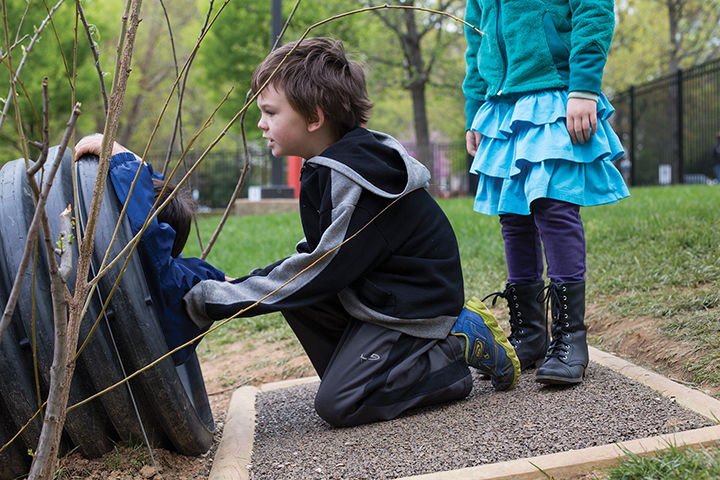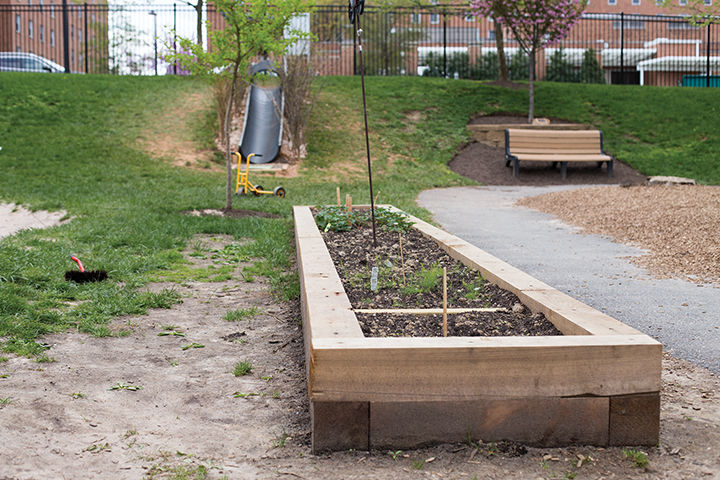Kindergartners at the Center for Young Children asked for new playground equipment.
One wanted a rocket ship to fly to space.
Another asked for a dress-up stage.
And though not all the requests were realistic, a university architecture class is using the kids’ suggestions to build new playground equipment for the CYC as part of a joint project with the agriculture and natural resources college, the education college and the architecture school.
Over the past two weeks, the playground received a new vegetable garden, a performance stage and a play teepee, said plant science and landscape architecture professor Steven Cohan.
They carved a slide from an industrial pipe and curved willows around the top, and on Maryland Day, they added a drawbridge between two trees.
Continued funding will allow the CYC to begin a second phase of renovations by May, Cohan said. The CYC will build a “secret stage” near some of the plants and install a weather station on a playhouse. For the performance stage, they also hope to build a pergola — an outdoor roof-like feature — and set up amphitheater-style seating around the stage.
“Children learn through play,” said CYC Director Francine Favretto. “They experiment and develop ideas through exploration. … New equipment also enhances physical development and keeps children away from hand-held devices. They become engaged in learning.”
The new additions are focused on relating nature to play, Cohan said. Each new piece of equipment lets the students interact and explore their environment using their imagination, he said.
“Our objective primarily here was not only engaging the kids in physical activities, but have them create learning opportunities with the things we were building,” Cohan said.
A team of graduate students from a structural architecture class, ARCH411: Technology II, helped design the bridge and slide, architecture professor Powell Draper said. Cohan approached Draper to brainstorm ideas, and then Draper used the class to build the two items.
“The students got a tremendous lesson about the difference between actually designing something on paper and then getting into the field and finding the conditions don’t exactly meet your expectations,” Draper said.
They also plan to grow more plants that attract certain insects, as well as a grass maze, Cohan said.
“Children are naturally curious about nature plants, insects, birds, weather and its impact, growing food, etc.,” Favretto wrote in an email. “So for children to first design a playground, see it implemented and their ideas respected and then having natural equipment to observe and play is a positive outcome.”
The second phase will be funded by a Launch UMD initiative, which has already raised about $11,000 — $4,000 more than its goal.
The installations are much cheaper than typical playground equipment, which can cost thousands of dollars, Cohan said.
So far, the children have shown excitement about their new equipment. Kindergartner Murilo dos Santos loves watering the plants and the tunnel-like shape of the slide.
“My favorite part of the slide is when I go down on the mats,” dos Santos said. “I put my feet [together] and it goes super fast.”
CLARIFICATION: A previous version of the story did not mention the involvement of the agriculture and natural resources college and the education college in this project.
Children slide down the new slide in the playground of the Center for Young Children on North Campus.
Children at the Center for Young Children on North Campus helped to plant a garden in their playground.





